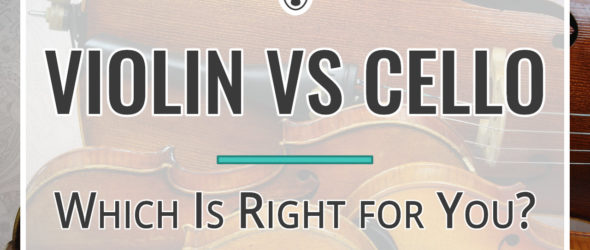The violin and cello are two instruments of the same family and have many similarities. However, they do have a lot of differences too.
Whether you’re just curious about how similar or different they are, or you are wondering which instrument would be better for you to start learning (or your child), in this article I will clear those differences up and help you choose the right instrument.
Both instruments have some similarities in technique, but they are not as similar as the violin and viola. If you want to know more about the differences between the violin and viola, check out this article.
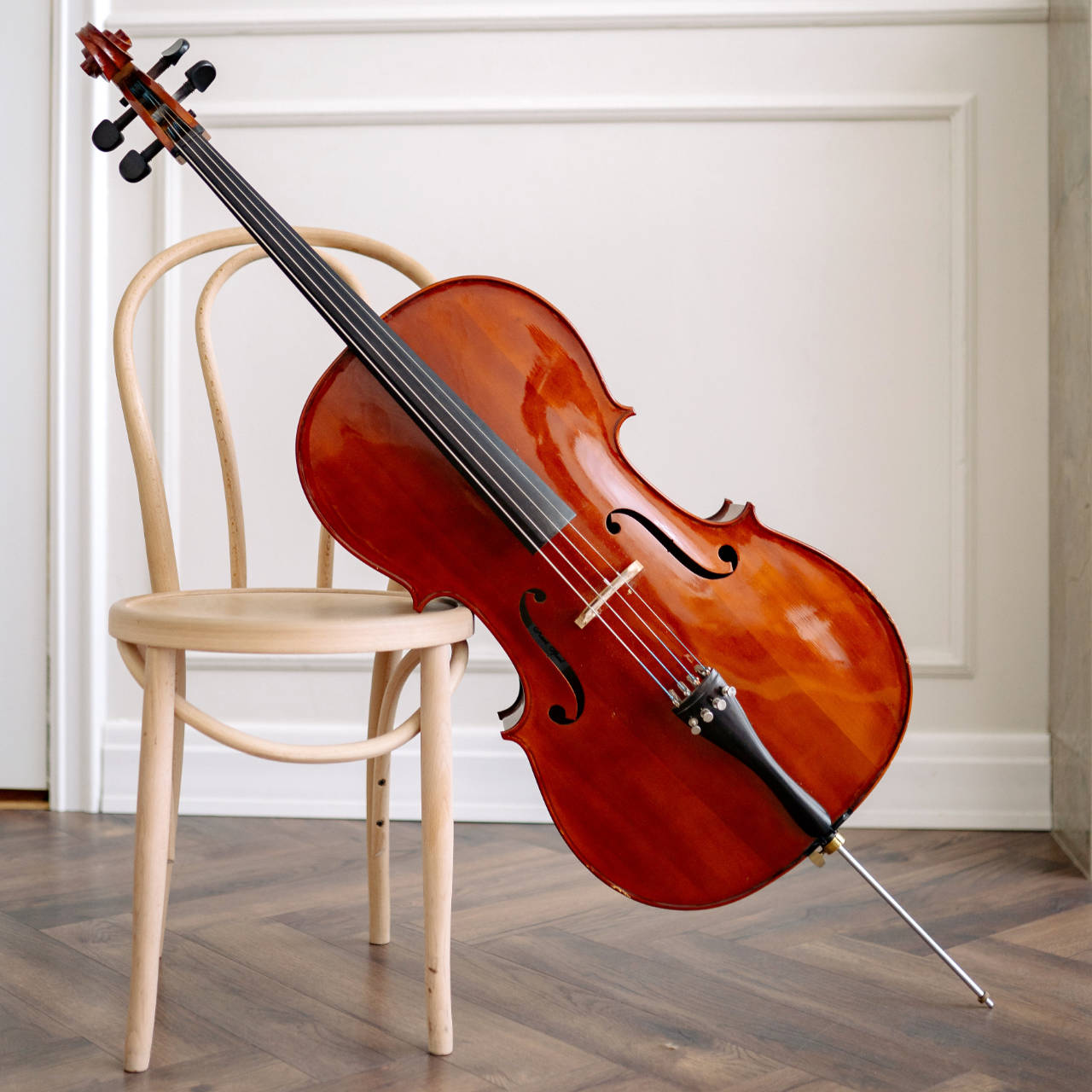
How Is the Cello Different From the Violin?
Both instruments are part of the same family, the violin family. Thus they have some similarities in appearance and tone, and the playing technique is of the same mindset. But while they do look alike, they have some major differences.
Appearance and Style
Size
The cello is much larger than the violin, even though it’s not the biggest of the family. A typical full-size violin, what we call a 4/4 violin, is about 40 cm or 16 inches. An average full-size cello is about 120 cm or 47.5 inches. That’s three times the height, so the cello is the larger of the two by a substantial amount.
That difference in size means the violin is easier to carry and handle. If you take a cello and add the case, a cellist needs to carry a weight of 7 kg (15.4 lbs) or more, while violinists only have to carry something a bit heavier than a handbag.
Of course, there are smaller sizes, depending on one’s growth but still, the cello is heavier and takes up more space, so it’s harder to move around (e.g. on public transport or on a bicycle journey).
Parts
The violin and cello have the same parts – all but one: at the exact opposite end of the scroll, the cello has the endpin. That is there to support it while you play because the instrument is played by default in a sitting position, with it between the legs.
These days, endpins are retractable, though older endpins were wooden and could not be removed.
Every other part of the cello is similar to the violin, the only difference being that cellos are larger in size.
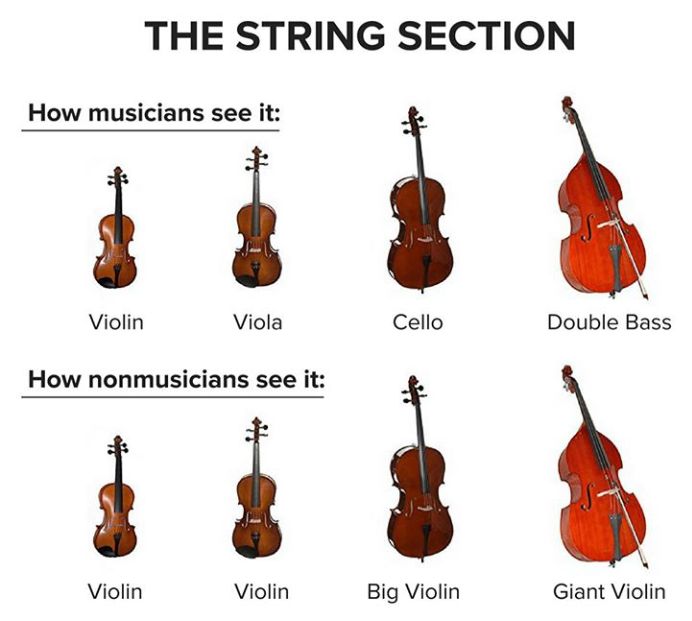
Bow
Both instruments’ bows seem similar but have some slight differences: cello bows are shorter in length but with a larger frog.

This is because the cello’s strings are larger, so they require more horsehair to vibrate sufficiently and with a good tone. The violin’s bow, while longer, is thin and elegant.
Strings and Tuning
Both violin and cello have four strings, which are longer and thicker on the cello. Those, along with the cello’s size, help produce bass sounds that resonate very well with the human ear.
The tuning of the strings is different, though: the violin strings, starting from the lowest are G – D – A – E, G3 being the lowest. At first sight, the cello strings are not that different: again starting from the lowest, it’s C – G – D – A, so in a way only one is different. However, the A is A3, so it’s in the same octave as the violin’s lowest and thickest string, and that means it goes as low as C2.
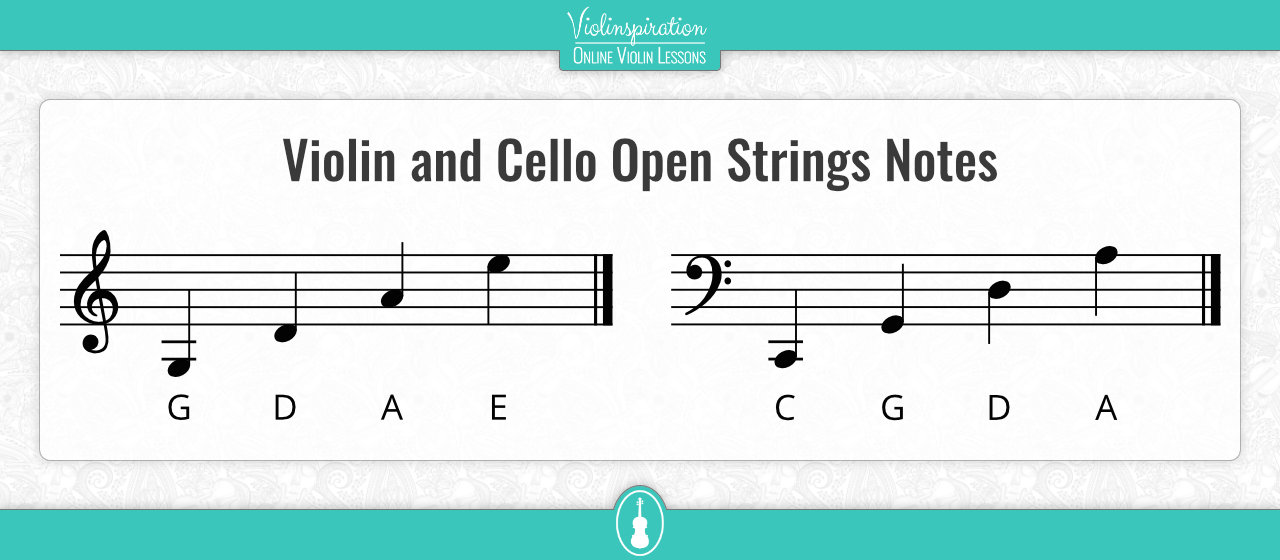
Technique and Playing Position
Both the violin and cello have similar difficulties with regards to technique: neither has frets, so you’ve got to focus on playing in tune. This means producing good sounds will take a while, and all the other difficulties apply that I have described in my post “Why is playing the violin so hard?”
However, the cello is played in the upright position and is placed between the legs. Its weight is mostly supported by the endpin, and the bow is drawn horizontally.
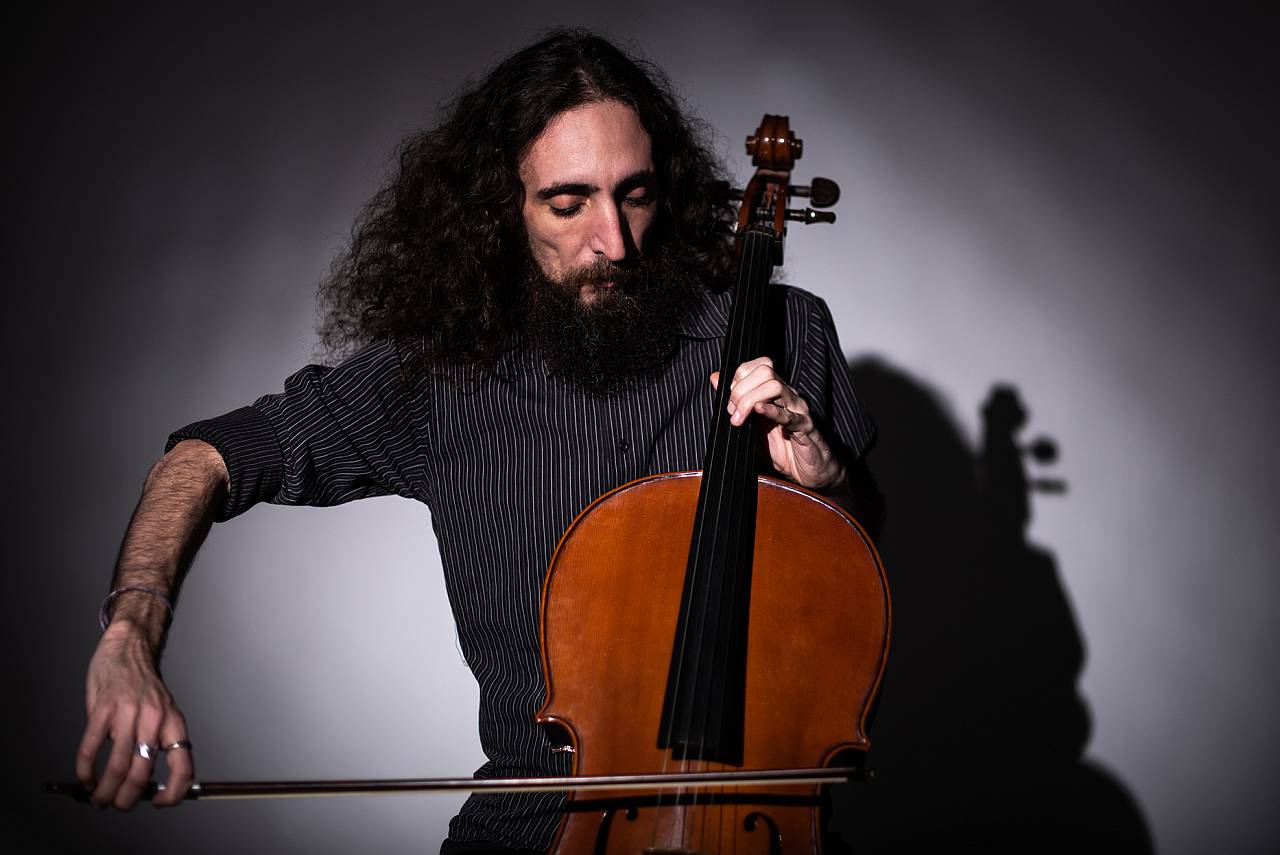
There are some exceptions to the default position. You can observe them in the video below:
The left hand sits on the cello much like it does on the violin, the only difference being that on the cello, the hand is vertical. However, cellists often place their thumb on the fingerboard while in high positions – something that never happens while playing the violin.
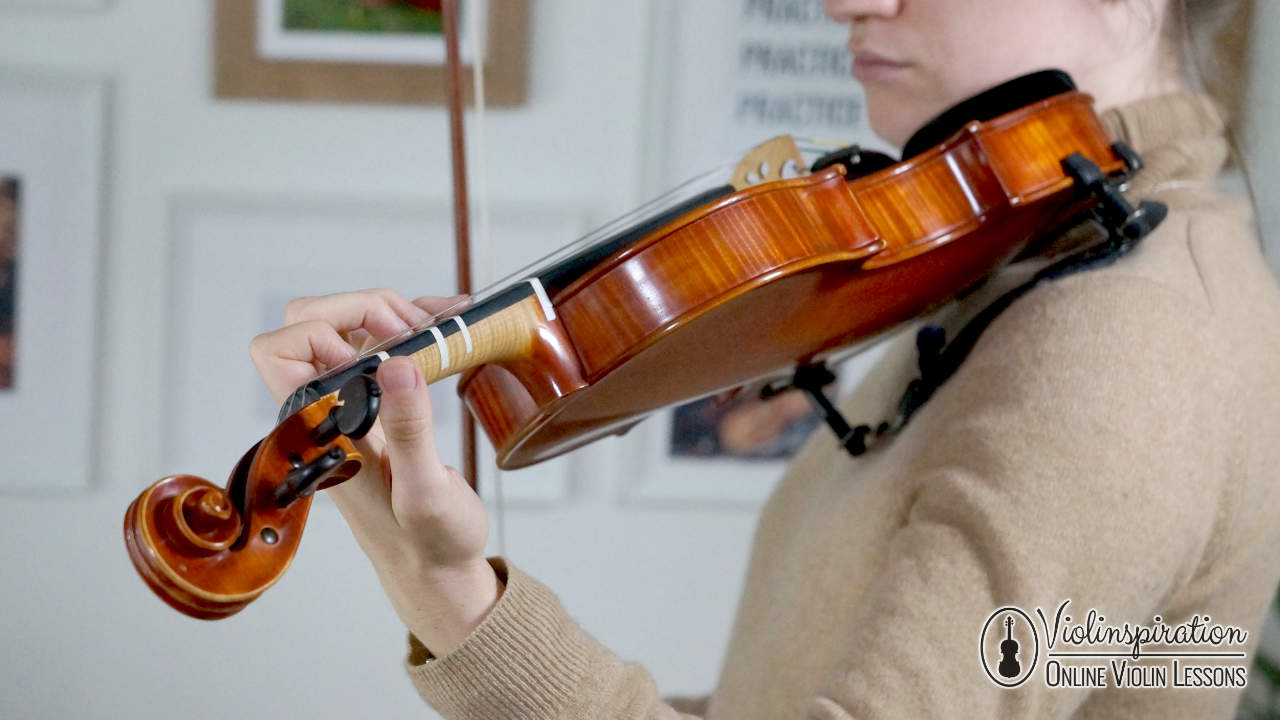
Lastly, some people feel that the cello’s playing position is more natural than the violin’s. It’s true that playing the violin might feel awkward at first and it might take a while to get used to it. When playing the cello, you’re just sitting with your legs apart, which is for sure more comfortable than standing with the instrument against your neck.
Sound Difference
Both instruments do have similarities in tone since they are in the same family. But there is a very distinct difference – for some people this is more major than the size.
The violin has a clear and generally high-pitched tone, which makes it perfect for playing melodies, especially in the orchestra. The high-pitched notes are loud enough to distinguish. It does not have much low end, since its lowest note is G3, and its relatively small size does not let low frequencies flourish.
On the other hand, the cello has a very warm and mellow sound filled with many low frequencies. Those make it an ideal candidate to fill harmonies, so in the orchestra it often plays the root note along with the double bass. However, its warm tone helps for melodies too. It is very distinct, and very close to the human voice, so melancholic melodies are often provided by the cello.
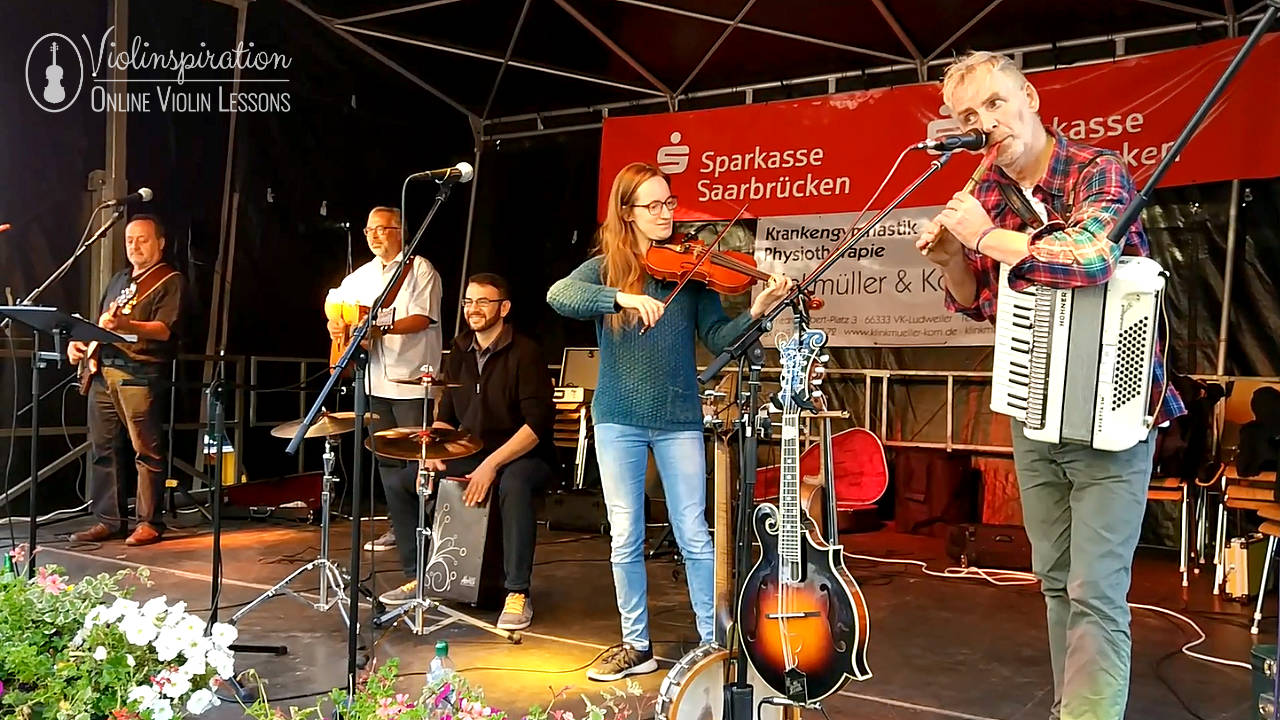
Repertoire
Both cello and violin are prominent orchestral instruments and can be found in pretty much every piece. They can both play in ensembles, though a violin ensemble is more common than a cello ensemble.
Apart from orchestral music, both instruments have a large variety of solo repertoire, though for the violin the repertoire range is far greater, with pieces from all periods of classical music. Both may appear in any genre, though the violin is used a bit more, due to its capabilities in soloing.
Compositions specifically for both the violin and the cello are not very common, as arrangements of popular pieces are much more often found, but there are some. You can check them out and listen to them here.
In recent decades, the cello has been found in non-classical music more often, including genres like pop and metal, especially in symphonic heavy metal and neoclassical metal.
Most notably, it has been popularized by the band Apocalyptica with their covers arranged for four cellos or original pieces composed for three or four cellos, percussion, and sometimes voice.
The violin appears more in folk music but there are examples of cello, though it’s rare. There are also several instances where both are used as an ensemble.
My favorite violin folk pieces are “Tam Lin”, which is a fast and quite difficult piece, and “King of the Fairies”, a much slower piece. You can listen to both here:
Here you can listen to how a cello sounds in the folk repertoire:
The Price of Violins and Cellos: A Deciding Factor?
If you have not decided which instrument you prefer, the price tag might be the deciding factor, as there is a major difference. The beginner-level violin is a relatively cheap instrument to buy, especially compared to the cello – even a student instrument is not that cheap.
Beginner Violin Prices
A cheap beginner violin cost starts around $100–$150 USD. For someone with no prior experience, or a child who is just a beginner, that is a good starting point. You should avoid anything under $100 USD, as it will not be playable, or helpful for your first steps.
If you’re ok with spending a bit more, I’d recommend buying a violin that costs around $500 USD because the quality you will get will be much higher.
Peripheral costs include strings, a shoulder rest, and other accessories. You can find a good set of beginner violin strings for as low as $20–$30 USD and the rest only rarely pass that threshold.
Beginner Cello Prices
Due to its size, the cello is much more costly. While there are some cheap options that can go as low as $150–$200 USD, these are not recommended, just like the cheapest violins. Your real options start at about $400–$500 USD. That’s really the least expensive option and actually, it would be better to start with an instrument for $800 USD or more, if your budget allows it.
And that’s not all. Cello strings for beginners can go from $60–$100 USD, depending on the quality. Thankfully, there’s no need for a shoulder rest, but that’s still a lot of money.
So while you might like the cello, you may want to consider whether you can afford to spend that much money. Unfortunately, playing an instrument is an expensive hobby, even though what you gain is priceless.
What Is Similar Between the Violin and the Cello?
The violin and cello are both in the violin family, so they have a few similarities:
- They have a similar shape
- Both are played with a bow so their tone is not that different
- They both have four strings, albeit tuned in different octaves
- Both have a huge repertoire to choose from
- Both can be found in several music genres other than classical
Both instruments are important members of the orchestra and have distinct roles. Sometimes, the cello stays in the back but as with any bass instrument, its importance is felt when it is absent. However, much like the violin, it does not lack melodies and solos.
Violin Vs Cello: Which Is Easier to Learn?
Neither stringed instrument is easy to learn. Both are difficult to produce a quality sound on and to play in tune. Learning the technique needs a lot of time and focus. You won’t be able to play any easy song very well during your first months on either, but that also depends on your consistent practice and earlier experience of playing a musical instrument.
The violin’s high-pitched notes are very difficult to play, and its solo repertoire is very challenging. The distance between the fingers is small, so it might be very hard to hit the notes in tune, especially when playing quickly.
The distance between the fingers on the cello is much greater, which might be a challenge when playing more advanced repertoire, as a scale in two octaves might need a couple of changes in position.
However, the cello might have the edge here. Because its repertoire is not as focused on solos and melodies as the violin’s, there might be more easy songs you can play alongside another instrument. In short, due to its role as the accompaniment, it might be slightly easier. Also, as stated above, the cello feels more natural to hold, in contrast to the violin.
Which Is For You, Violin or Cello?
It all depends on your taste and your budget. If you like the low frequencies and mellow tone, most likely you’ll be happier learning the cello. If you like a clear tone and would love to play solos, you will feel accomplished playing the violin.
When comparing instruments of the same level, especially for a beginner, the cello is more expensive, so if you like both and your budget is small, you may want to choose the violin, as it costs less. On the other hand, when you look at the highest-quality antique violins, you will discover that there is nothing more expensive!
FAQ
Is it easier to learn violin or cello?
The cello might be slightly easier to learn, due to its repertoire and more natural holding position. However, both instruments have similar difficulties in technique and sound production, and neither have frets. When it comes to mastering an instrument, they both should be considered equally hard.
Is the cello or violin better?
Neither instrument is better than the other – each has its own unique qualities. Everything is a matter of opinion. If you prefer clear, high-pitched sounds and soloing, then the violin is better for you. If you prefer warm and mellow tones and less of a hard focus on playing solo, the cello is better in your case.
Can you play the cello if you play the violin?
If you already play the violin, it will be easier for you to learn the cello as you already know the basic mechanics of how to produce good sound and play in tune. While the two instruments have their differences, they have similar techniques, even if the playing position is different (standing for violin, sitting for cello).
Conclusion
So, to sum up, let’s look at the pros and cons of choosing each instrument!
Violin Pros
- Lighter, so easier to carry around
- Cheaper to buy for a beginner
- Cheaper accessories
- Clear sound
- Massive and diverse repertoire
- Ideal for soloing and melodies
- Principal orchestral instrument
- Versatile enough to play different genres, from classical to heavy metal
Violin Cons
- Holding the violin feels a bit awkward and unnatural
- Difficult to produce good quality sound and play in tune
- Very small distance between the fingers in the high positions
- High-pitched notes might be annoying for some
Cello Pros
- More natural position while you play
- Mellow and warm tone that resonates well with the human ear
- Can play solo and accompany
- Important orchestral instrument
- Large and diverse repertoire
- Can be found in pop music and other genres
Cello Cons
- Heavy and difficult to carry
- Expensive instrument and paraphernalia
- Difficult to produce good quality sound and play in tune
- Requires constant changing of position in the left hand
Both these stringed instruments are loved by almost everyone and have their unique qualities, so whichever you choose, you’ll be rewarded by being able to play one of the most difficult and most beautiful instruments!
If your choice is the violin, make sure to click here and request your invite to Julia’s Violin Academy. In the Academy, you will learn the violin with a step-by-step plan and get a lot of support and motivation from the community!
